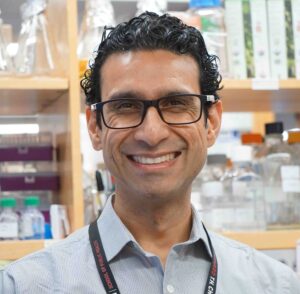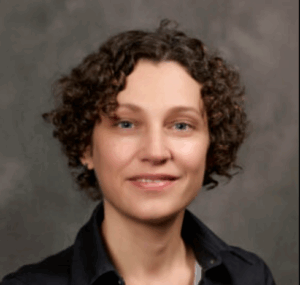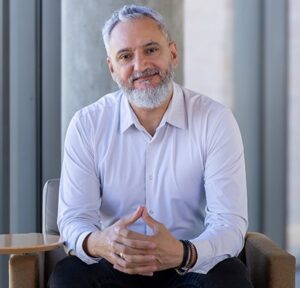We are excited to announce that eleven new projects have been awarded Global Incubator Seed Grants this month, enabling WashU faculty to kickstart innovative international collaborations. These projects span a diverse range of cutting-edge research, from developing breakthrough energy devices to advancing malaria research, driving new frontiers in global scholarship and impact.
These eleven projects are part of nearly 100 Global Incubator Seed Grants awarded over the past five years, reflecting the program’s sustained success in fostering early-stage international research partnerships.
Designed to catalyze faculty-led international research, the program provides one-year, non-renewable grants of up to $25,000 to help WashU faculty incubate new projects that involve at least one highly engaged international partner from universities, NGOs, or industry. More than a funding mechanism, the program is a dynamic platform that builds relationships across disciplines and countries—enabling WashU and its global partners to co-create knowledge, advance research, and shape policy with worldwide relevance.
Funding for this year’s cycle is made possible with support from WashU Global and the Office of the Provost through the University’s “Here and Next” strategic plan.
30
Projects proposed in 21 countries
11
New projects launched
$275K
Total funding awarded
View the 2025 Seed Grant recipients
Africa
Investigating the Red Blood Cell Invasion Determinants of Neglected Malaria Parasites
Foreign Collaborator’s Institution: University of Ghana, Ghana
Focus Areas: Public Health & Medical Research

Malaria remains a major global infectious disease and is caused by six species of Plasmodium parasites. P. falciparum causes the majority of malaria globally and is the target of vaccine development efforts, including against essential invasion ligand proteins required for infection of red blood cells (RBCs). P. malariae and P. ovale spp. are neglected malaria species, often found as co-infections with P. falciparum, and whose frequency is increasing in sub-Saharan Africa. We have little understanding of the molecular determinants of RBC invasion for these parasite species, and here we aim to: (1) obtain, with informed consent, clinical isolates of these parasites from a collaborator in Ghana. These isolates will be cryopreserved, shipped to WashU, and used to develop: (2) RNA-FISH probes for identification of parasites in multi-species infections; (3) short-term in vitro culture and invasion assays into RBCs and immortalized erythroid cell lines. These data will support future grant applications.
The Intersection of Climate Change and IPV among Young Women Living with HIV in Uganda
Foreign Collaborator’s Institution: Makerere University, Uganda
Focus Areas: Environmental Research & Public Health

“Sub-Saharan Africa bears a disproportionate burden of HIV and climate vulnerability, with Uganda ranking among the most climate-affected regions. Young women living with HIV (YWLHIV) face unique risks at the intersection of climate change, intimate partner violence (IPV), and poor mental health—factors that significantly disrupt antiretroviral therapy (ART) adherence. Climate-induced disasters such as floods, droughts, and landslides destabilize healthcare access, exacerbate economic insecurity, and increase IPV risk. Guided by Intersectionality Theory and the Theory of Gender and Power, this study examines how poverty and mental health mediate the relationship between climate disasters, IPV, and ART adherence. Using a mixed-methods approach, we will collect quantitative data from 200 YWLHIV and conduct in-depth interviews with 20 to capture their lived experiences. Findings will directly inform the development of integrated, climate-resilient interventions that address the structural barriers to HIV care while informing global public health strategies in an era of climate change.”
Asia
Redefining Perovskites: Single-Crystal Growth under Vacuum for Breakthrough Energy Devices
Foreign Collaborator’s Institution: Seoul National University, South Korea
Focus Areas: Environmental Research

This project will redefine the way perovskites are made by pioneering the vacuum growth of single-crystal perovskite (PVSK) films—a transformative leap beyond conventional solution processing. Traditional wet-chemistry routes leave behind chemical residues and severe defect networks that limit device efficiency and long-term stability. Our approach replaces this disorder with order: by steering organic cations into a pre-aligned crystalline template under vacuum, we achieve highly ordered, defect-sparse perovskite lattices. Early experiments have already demonstrated the direct conversion of single-crystal templates into wafer-scale, uniform PVSK films, confirming both the feasibility and scalability of this strategy. The resulting perovskite platforms will enable radically improved solar cells, light emitters, and multifunctional sensors, laying the groundwork for a new generation of high-efficiency, durable energy technologies.
Understanding Traumatic Brain Injury through Hypoxia and Hyperoxia Mouse Model
Foreign Collaborator’s Institution: IISER Tirupati, India
Focus Areas: Medical Research

Hypoxia, a condition of inadequate oxygen supply, is a common phenomenon affecting neurons and brain tissue, leading to significant implications for neuronal health and function. The prevalence of hypoxia in the brain is associated with various neurological conditions, making it a critical area of study. Dr Aravamuthan’s lab at WashU is engaged in understanding the hypoxia and hyperoxia models. The lab is also investigating cerebral palsy in neonatal brain injury. Dr Devanathan’s lab has already established a hypoxia model in cortical neurons, cells from the brain. Their data in submission to a peer review journal indicates the role of Paranodin/Caspr 1 in Hypoxia. Caspr 1 is a protein implicated in paranodal formation, and experiments from Devanathan’s lab have shown the involvement of Caspr 1 in hypoxia, making it a potential protein to further study. During the tenure, the collaboration will also engage in exploring novel biomarkers using brain tissues of hypoxic mouse model.
Europe & Middle East
Tunable Clays for Enhanced Lithium Recovery and Contaminant Sequestration
Foreign Collaborator’s Institution: École Polytechnique Fédérale de Lausanne (EPFL), Switzerland
Focus Areas: Environmental Research

Clay minerals display enhanced ability to extract lithium from water and trap inorganic contaminants when structural iron is converted to a chemically reduced form. However, work to date has investigated a small number of natural clays that display barriers to wider application. Cycling of iron in clays between reduced and oxidized forms promotes lithium binding and then release, but irreversibly traps a portion of the lithium. Similarly, reduced clays repel contaminants that occur as anions (negatively charged) and passivate before they fully reactively-trap contaminants. Directly tuning the composition, structure, and charge of clay minerals potentially enables optimizing these solids for reversible lithium recovery and maximizing contaminant sequestration. We propose to apply hydrothermal synthesis of novel clay compositions and mediated electrochemical reduction and oxidation to demonstrate the tunability of clay minerals for the recovery of lithium and the sequestration of metal contaminants in support of a future proposal to NSF.
Leveraging Actin Methylation by SETD2 to Treat Clear Cell Renal Carcinoma

Foreign Collaborator’s Institution: Warwick University, United Kingdom
Focus Areas: Medical Research
Development of chemoresistance is a rising problem and is emerging as the leading cause of tumor metastasis and patient relapse. As such, there is an increasing need to develop anti-cancer strategies that are directed against different cellular systems than the ones that are currently targeted. Because of its critical roles in cell migration, differentiation, and proliferation, the actin cytoskeleton is strongly linked to cancer progression and thus makes an attractive alternative target. However, this has proven difficult, as all available anti-actin agents have major side effects. We propose here to determine the potential of actin posttranslational modifications to treat cancer. Specifically, we will investigate how actin methylation contributes to SETD2 tumor-suppression in clear cell renal carcinoma using a combination of engineered carcinoma lines and in vitro analysis of methylated actin. Collectively, the proposed experiments will lay the foundation for future studies focused on developing actin posttranslational modifications into novel anti-tumor strategies.
Adapting and Enhancing Self-Help Plus (SH+) for Afghan Refugee Women in Türkiye
Foreign Collaborator’s Institution: Koç University, Türkiye
Focus Areas: Public Health & Local-to-Global Connections

This proposed project aims to support the mental health of Afghan asylum-seeking and refugee (ASR) by updating and adapting the Self-Help Plus (SH+) facilitator manual and audio recordings, and by providing an SH+ booster session to 40 distressed Afghan ASR women living in Kayseri, Türkiye. SH+ is a mental health intervention developed by the World Health Organization. This project builds on our earlier work, including a needs assessment and pilot testing of SH+, and directly responds to feedback from Afghan ASR women and our community partner’s request for adaptations to the Dari version of SH+, as well as the addition of a “booster” session to reinforce and extend its benefits. By adapting the Dari version of SH+ and testing the added value of an SH+ booster session, the project will generate evidence to inform an NIH R34 proposal and support the strategies to improve mental health among Afghan ASR communities.
South America
Applying Artificial Intelligence to Assess Spatial Inequities in the Global South
Foreign Collaborator’s Institution: Universidade Estadual de Londrina (UEL), Brazil
Focus Areas: Digital Transformation & Public Health

The Global South is experiencing persistent spatial inequities, undermining urban livability and public health. A livable city ensures safety, health, mobility, and access to opportunities for all; yet, many cities face uneven distribution of infrastructure and services. This proposal brings digital transformation, public health, and environmental research together to evaluate neighborhood livability in five Brazilian cities. By using mixed methods, we combine artificial intelligence (AI) analysis of street-level imagery with stakeholders’ insights. We will utilize Google Street View images and advanced computer vision-language models to automatically audit microscale-built environment features that influence health and well-being. Focus groups will complement this AI-driven audit to capture urban planning and public health stakeholders’ readiness to use AI-generated metrics. By comparing high- and low-vulnerability Brazilian neighborhoods, we aim to identify local-to-global applications for spatial and social inequities and highlight how they are manifested, and to generate a low-cost, scalable toolkit for assessing urban livability.
Electrochemical Depolymerization of Lignin for Cost-effective Bioproduction
Foreign Collaborator’s Institution: University of São Paulo, Brazil
Focus Areas: Environmental Research

The pulp and paper industry generates 50 million tons of lignin as a waste each year and lignin utilization is also critical for the cost-effective lignocellulosic biorefinery. This project aims to transform lignin utilization by leveraging the cutting-edge discovery from a recent collaboration between Washington University in St. Louis and the University of São Paulo. The project is built upon a new concept of electrochemical lignin depolymerization, where lignin is depolymerized in deep eutectic solvents in an electrolyzer. We have discovered the conditions to allow Pseudomonas putida to grow directly on the electro-fractioned lignin without purification, opening new avenues for electro-bioprocess integration to significantly reduce the cost and improve the sustainability of lignin conversion. The project will allow the international team to continue to reveal the molecular mechanisms and develop cost-effective lignin-to-bioplastics conversion. This project combines scientific innovation with practical relevance, offering a sustainable strategy for waste valorization.
North America
Quantifying Joint Health Effects of Extreme Heat and Wildfire Smoke on Older Adults using Statistical and Machine Learning Approaches
Foreign Collaborator’s Institution: University of Toronto, Canada
Focus Areas: Public Health & Environmental Research

Climate change is making Canada hotter and smokier. Heat waves and record-breaking wildfires, such as those in 2023, are exposing people to dangerous temperatures and polluted air, with older adults facing the greatest health risks. This project focuses on Toronto to understand how extreme heat and wildfire smoke, individually and in combination, affect older adults’ health. We will create high-resolution maps that track heat and smoke across neighborhoods and link them to Ontario health records for people aged 65 and older. Using advanced statistical and machine learning methods, we will examine both short-term effects, such as asthma attacks and emergency visits, and long-term impacts on heart and lung health. The results will reveal which populations and communities are most vulnerable, providing evidence to inform policies, healthcare planning, and community interventions to better protect older adults as climate extremes intensify.
Investigating the Fidelity of Meiosis in Non-Mendelian Inheritance Models
Foreign Collaborator’s Institution: University of Manitoba, Canada
Focus Areas: Medical Research & Local-to-Global Connections

When parents have children, each parent normally contributes half of their genetic material (chromosomes) to create a unique combination in their offspring. However, sometimes this process goes wrong, leading to genetic conditions like Down syndrome or Prader-Willi syndrome. Our research focuses on a gene called WDR90 that appears important for ensuring chromosomes are distributed correctly during reproduction. When this gene does not work properly, we observe that offspring can inherit entire chromosomes from just one parent instead of the normal mixed contribution from both parents. This unusual inheritance pattern can expose harmful genetic variants that would normally remain hidden. Using zebrafish as our research model, we are investigating exactly how WDR90 controls chromosome distribution and what happens when it malfunctions. By understanding this process, we hope to develop better ways to diagnose and potentially prevent chromosomal disorders that cause significant health problems and developmental disabilities.